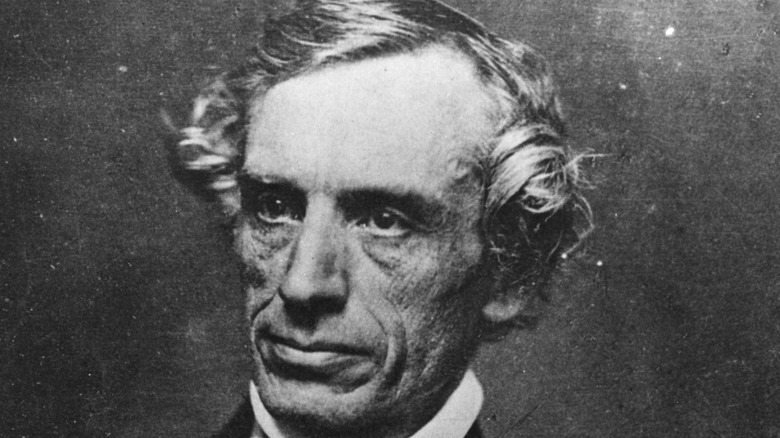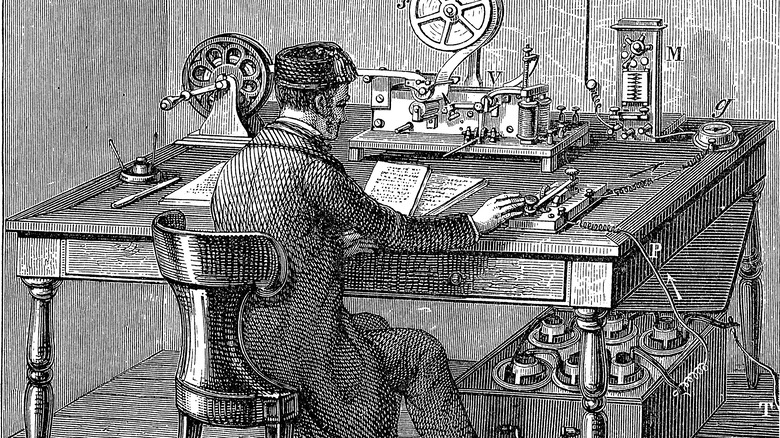How Tragedy Led To Samuel Morse Inventing The Telegraph
Famed inventor Samuel Morse started out as a painter, but a personal tragedy drove him to create one of the most revolutionary communication devices of his day — the telegraph. Born Samuel Finley Breese Morse in 1791, he was the son of the well-known geographer and minister, Jedidiah Morse (via Britannica). Morse had some interest in electricity early on in his life but his real passion was art.
Morse loved to paint portraits, and he continued to work on his art after he finished his studies at Yale University in 1810. The following year, he went to England to study painting with Washington Allston. According to History Central, Morse was also mentored by Benjamin West and joined the Royal Academy. Returning to the United States in 1815, he struggled to find work as a painter and took assignments for portraits to help support himself. Morse was in New Hampshire looking for portrait commissions when he met Lucretia Pickering Walker in 1816 (via the Library of Congress).
Morse and Walker wed two years later, and they welcomed their first child, daughter Susan, in 1819. He later moved with his family to New Haven, Connecticut, where he painted portraits of some important local figures such as Noah Webster and Eli Whitney. In 1825, Morse received a commission from the City of New York to paint the Revolutionary War hero, the Marquis de Lafayette. He traveled to Washington, D.C., for the project, and this trip changed the course of his life.
Samuel Morse developed the telegraph after his wife's death
While working in Washington, D.C., Morse experienced a sudden loss but he didn't learn about the tragedy until much later. His father sent him a letter telling him that his wife Lucretia had died (via National Geographic). His father wrote, "My heart is in pain and deeply sorrowful, while I announce to you the ... death of your dear and deservedly loved wife." The letter, transported by riders on horses, reached Morse days later. By the time he returned to New Haven, the family had already buried her. She was only 25 years old. The couple had welcomed their third child, son James, the month before, and she had suffered a heart attack during her recuperation from the child's birth.
The death of his wife inspired Morse to explore faster ways of communication. He wanted messages, like the news about his wife, to reach people faster, so that no one would have to miss significant events. Had Morse known his wife was ill, could he have been able to make it home in time to say goodbye? In 1832, Morse started developing the electromagnetic telegraph and he filed his patent for the device five years later (via the Library of Congress). Congress funded a telegraph line to be built from Washington, D.C. to Baltimore, Maryland, and Morse used this line to send out the first message, "What hath God wrought?" in 1844. This message illustrated the power of the telegraph, and the device launched a communication revolution.

